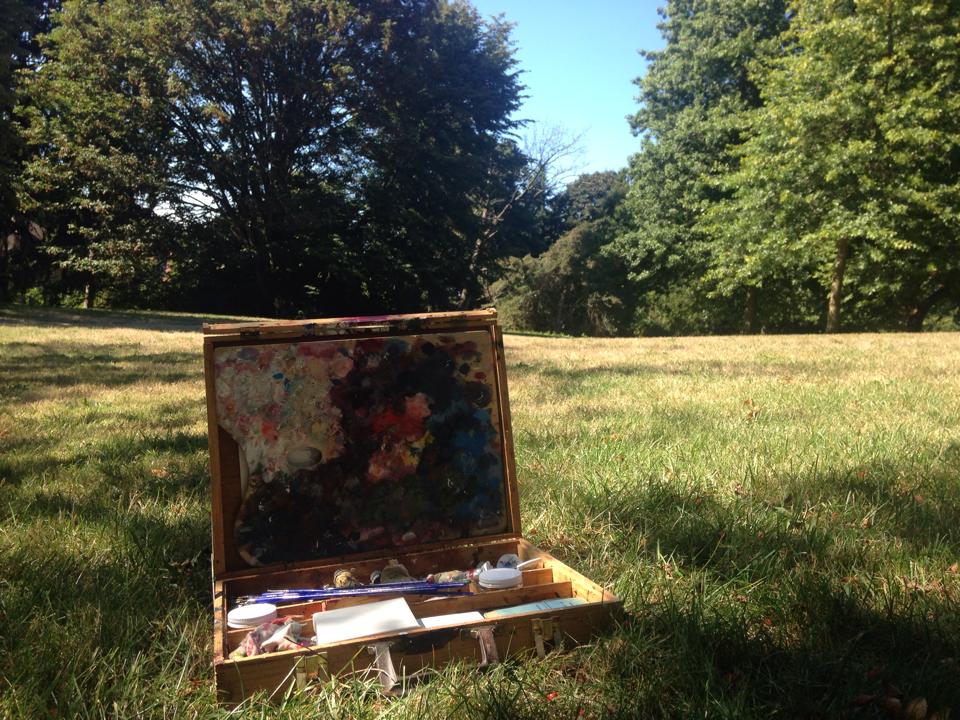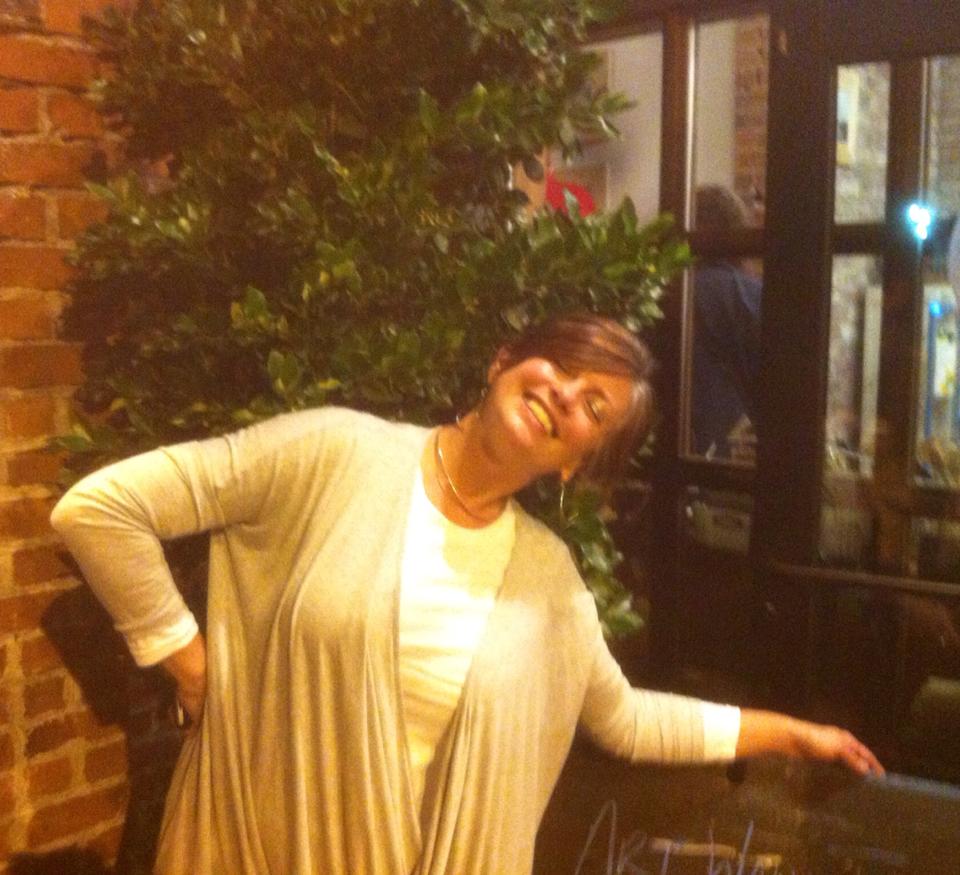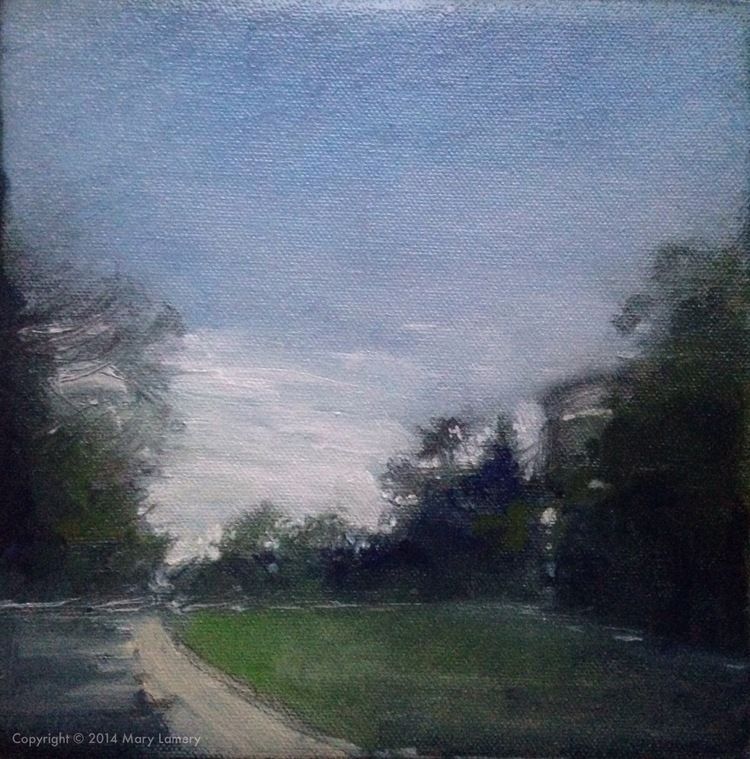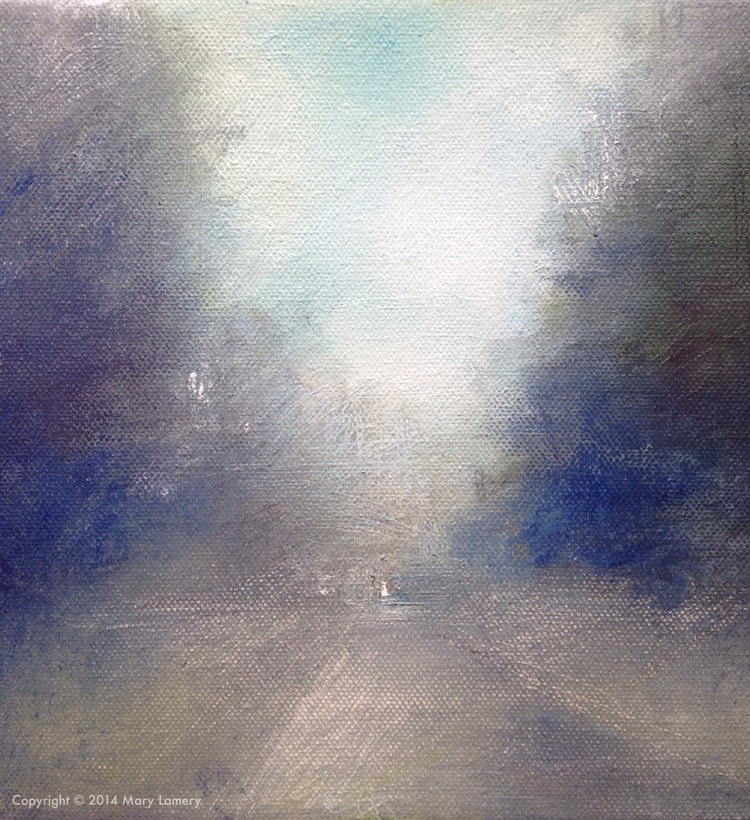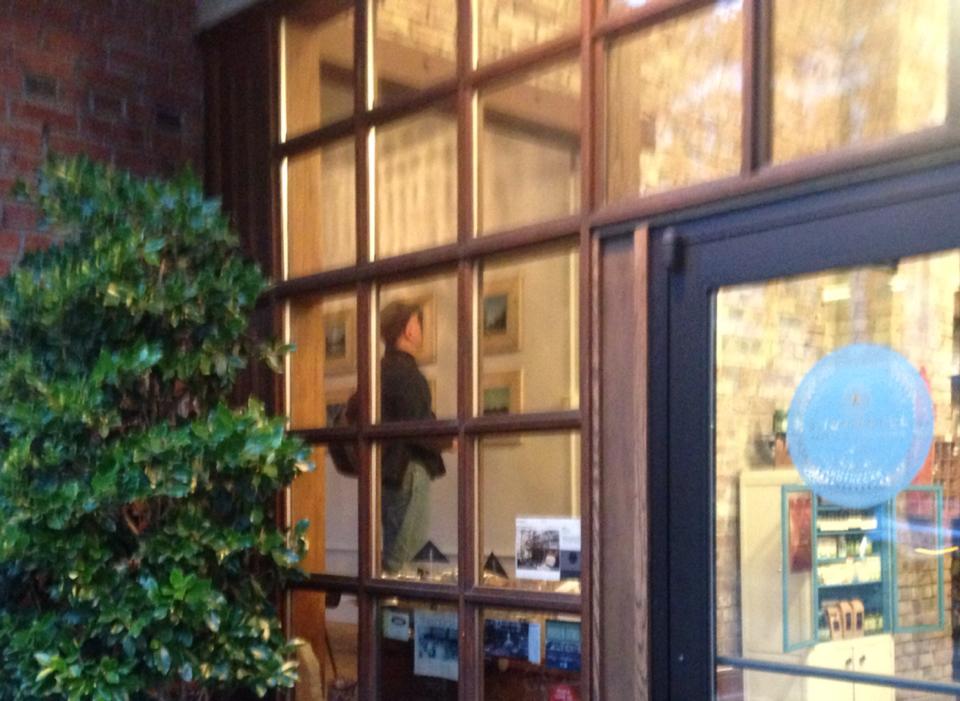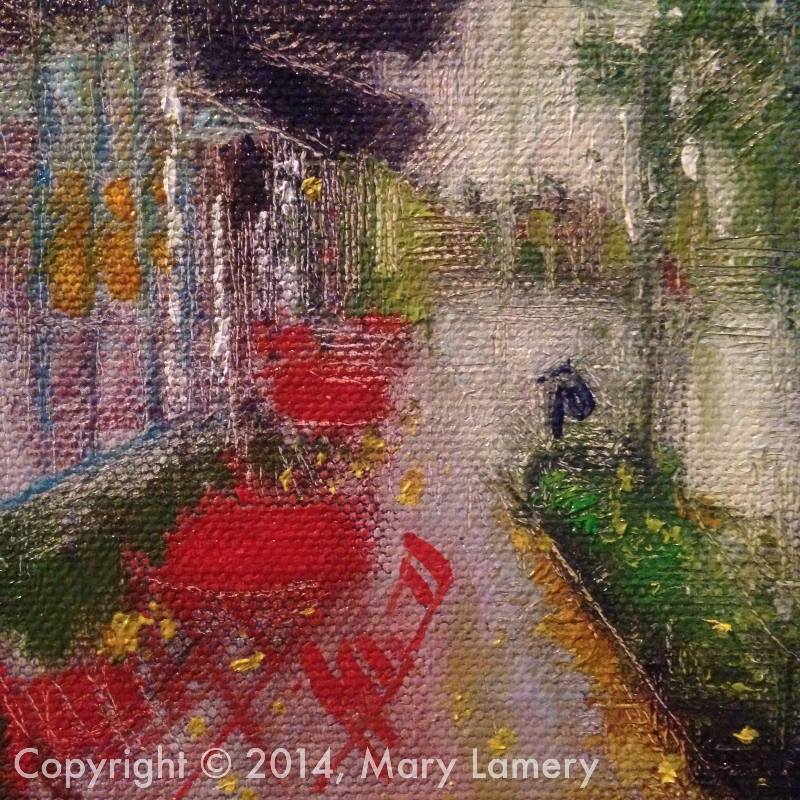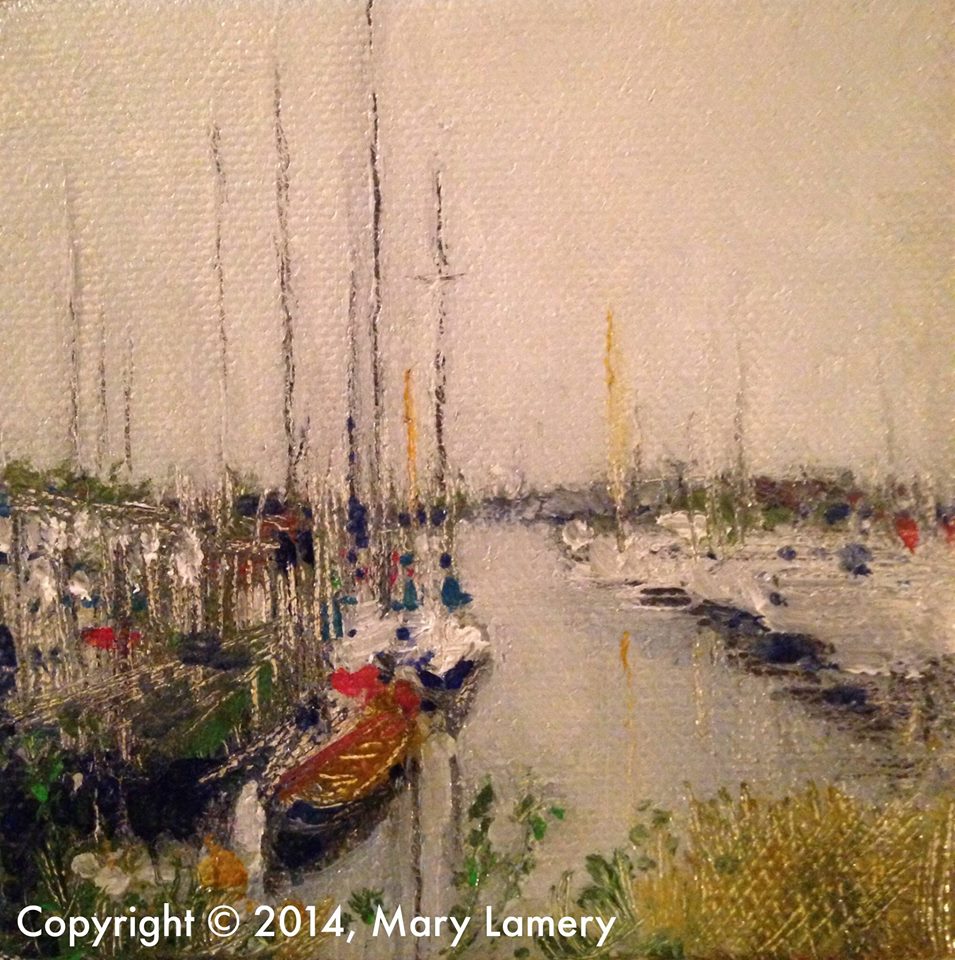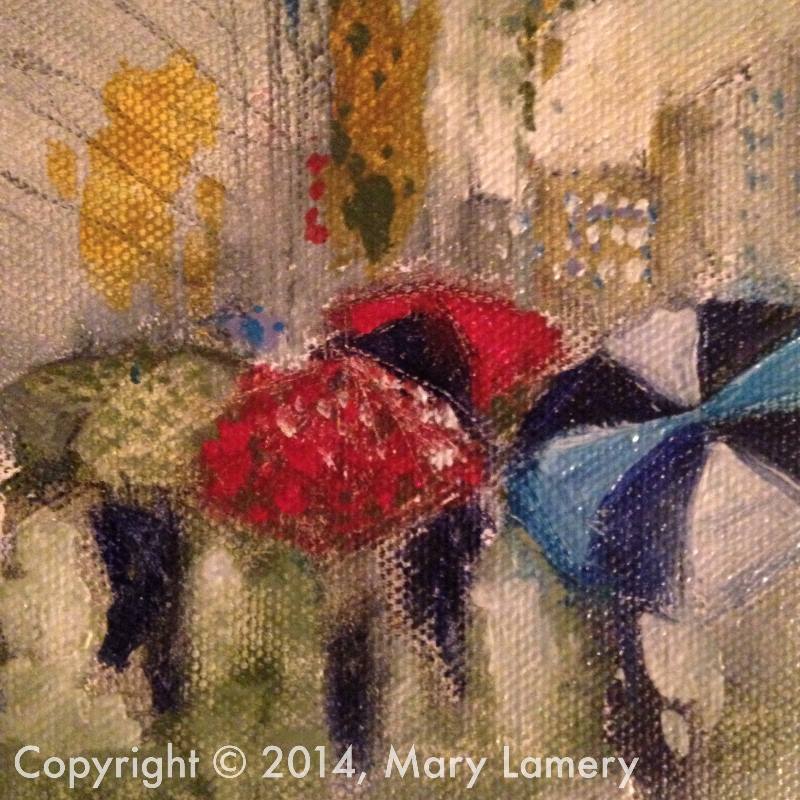“I will never get bored with this,” says Mary Lamery of painting places in new ways, recording what she hasn’t seen before. She is drawn to what the Impressionists did when they broke with classical school of perfection and Graeco-Roman subjects. “They also broke school,” she adds, “by loosening their strokes and using local color in terms of shadow.” They painted life in the moment—and developed the idea of completing a painting in one sitting.
But Mary’s goal isn’t to just paint like an Impressionist. Life is very different these days. Far from being locked into stiff, static forms and strict conventions, we are awash in a turbulent sea of constantly changing impressions and values. So instead of freeing us up, Impressionistic techniques and ways of looking can now allow us to slow down and “observe what’s there,” to take in “the individuality of things and see the innate beauty and elegance we take for granted”—or don’t see at all in our busy lives.
Mary is donating a painting for auction at Whim W’Him‘s Out On A Whim 2014 fundraiser November 6—from her Capital Hill landscape series, currently on view in a show called Sense of Place at Sugarpill, an herbal apothecary of medicinal and culinary herbs and spices with a pleasant little gallery located inside, at 900 E Pine on Capital Hill.
(The exhibit will run through mid-November.)
Mary writes of this painting: “One evening while walking in Volunteer Park at dusk, I could hear strains of french horns emanating from the water tower built in 1906 (to the right in this painting). I followed the music and climbed the 107 steps to the top where the observatory is located. It was here where two musicians were stationed, their music stands in front of them, playing the most elegant renaissance music.”
In recent months Mary has embarked on a new series, called 100 Days, which is just that: a painting to be completed each day across 100 days. A lot goes on in these little daily paintings. Textures of light. Composition. Isolation of subject. Seeing a tree or a boat or an umbrella in its natural setting. It’s remarkably hard work too, she notes, “very challenging, physically difficult, like trying to express yourself in a foreign language, not your native tongue, all day.”
“The takeaway” for Mary of this exhibit is how it appeals to people of all ages. A belle-mere exclaims over the paintings in French. A man comes up to Mary with his excited daughter, around 11 years old, who is so taken with the pictures she can’t stop talking about how they have reached her.
“On my way home from work,” says Mary, “I saw this gentleman looking at my work. I paused for a moment, thrilled to see someone engaged in viewing the paintings, and not sure if I should interrupt. I realized I had an opportunity to connect, and went in and introduced myself as the artist. It was fun to talk about the work and the inspiration behind it.” The paintings in this show are both accessible, in the sense of being readily connectable with the viewer’s experience, and sufficiently abstract so that people find a multiplicity of meaning in what they see.
Having lived on Capital Hill since 1984, Mary has watched it through many changes and moods. What I find particularly intriguing, since it’s a very urban neighborhood, is how she chooses so often to portray its open spaces, its trees and landscapes, places we may tend to forget are there or don’t take the time to stop and observe closely.
From Mary’s own point of view, the 100 Days project has been a major challenge and a fantastic learning experience. “I can’t say I’ll skip today,” as she says. “There’s no second guessing or procrastinating. I can see what’s needed. It’s lively, fresh, and I’m learning new techniques. I see the world more with composition in mind now all the time—little points of appearance, things we pass and take for granted. Take a moment and extrapolate. I push through boundaries, and it succeeds more often than not, and I come up with something I wouldn’t have done before.”
Although she has been an artist all her life, Mary majored in economics and math at Western Washington University in Bellingham, WA. She wanted to go to work for the United Nations, to make the world a better place. She has done and still does work for non-profits. But it is in her painting where she feels she contributes most. “We need to talk,” she says, “to get to know one another. We must have a bridge of understanding— build a bridge and meet on it. Art is a great place for that, and I want to have role in it. The paintings cause people to pause and see the world.”
